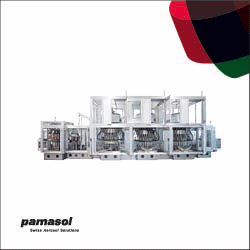Chloride ions & spray package corrosion
Hello, everyone. Corrosion is everywhere and no type of metal, coated metal or laminated metal foil package is immune from both metal and/or polymer corrosion. It is often erroneously believed that chloride ions are the principal cause of spray package corrosion, particularly when chloride ions are found around or inside corrosion sites. In this issue, […]
When to test for spray package corrosion
Hello, everyone. One of the most frequent questions that I’m asked is, “When is corrosion testing required for spray packaging?” Spray packaging corrosion risk without corrosion testing or a comprehensive company corrosion database is approximately 62% for aerosol containers and approximately 20% for laminated metal foil packaging. Therefore, high risk comes with no corrosion testing. […]
Calculating Corrosion vs. Corrosion Testing, Part 2
Hello everyone. In the last issue, we discussed the complexity of corrosion and how one could determine if spray package corrosion will or will not occur. I listed the nine known factors that cause or contribute to spray package corrosion. The empirical equation for these nine factors help determine what type(s) of corrosion occurs and […]
Calculating Corrosion vs. Corrosion Testing, Part 1
Hello everyone. Corrosion is a probabilistic process, not a simple deterministic process with only one causative factor. There are approximately nine major factors that could cause corrosion, which means there are 362,880 possible combinations of these factors that could cause spray package corrosion. This is why corrosion is probabilistic. There are three basic corrosion questions […]
Corrosion failures may be very costly…
Hello everyone. In previous editions of Corrosion Corner, I’ve discussed the cost of in-market corrosion failures. These are package corrosion failures that occur with an existing or derivative commercial product. In this issue’s column, I’m going to refine the prior discussions on in-market failures and add in-development failures from package corrosion observed during new/derivative product […]
Does water cause spray package corrosion?
Hello, everyone. Which chemical most often contributes to or causes spray package material corrosion? Water! Water can be in a formula, either as an ingredient or as a contaminant. There are four reasons why I am so quick to implicate water as the most frequent contributor to or cause of spray package corrosion. First: Water […]
Spray package material defects, Part 3
Hello, everyone. In March, we covered defects in polymer and tinplate coatings and their relationship with corrosion. The April column covered defects in laminated film bags, along with those found in traditional steel aerosol containers. Most of the material defects in spray packages are very small, but can still be seen with the unaided eye. […]
Spray package material defects—Part 2
Hello, everyone. In the last issue, I began a series on material defects in spray packaging and the relationship between these defects and corrosion. This month, I’ll discuss the more common material defects found in laminated foil bag packages—bag-on-valve (BOV) packaging—as well as both coated and uncoated steel aerosol containers. The final, Part Three discussion […]
Spray package material defects: Part 1
Hello, everyone. There is no such thing as defect-free spray package materials. There are always potential concerns as to whether or not defects will contribute to, or cause, spray package corrosion and if corrosion at the point of defect will cause spray packages to fail (leak). This issue starts a three-part discussion on material defects […]
Why storage tests fail to predict actual corrosion
Hello, everyone. Static storage testing—also known as storage stability testing (both SST)—is the oldest form of corrosion testing for spray packaging. The goal of an SST is to ensure that products are safe to use, provide the expected efficacy and do not leak during the time consumers use the product. Package failures in the market, […]





